 October 19, 2017 John E. Ross, KD8IDJ, Editor
| ||||||||||
"Force of 50" Volunteers' Puerto Rico Hurricane Recovery Mission Ends The 22 "Force of 50" radio amateurs who deployed to Puerto Rico earlier this month as American Red Cross volunteers have ended their mission and will be back on the US mainland by week's end. They had been in Puerto Rico for about 3 weeks.
Val Hotzfeld, NV9L, who filed situation reports documenting the team's activities, said the volunteers accomplished everything they went to Puerto Rico to do, "and then some." She said that the Red Cross felt they had exceeded all expectations. "We opened a lot of people's eyes when we started going to the ESF-2 communications task force meetings. They had no idea of our capabilities," Hotzfeld told ARRL. "When they heard what we'd accomplished, we were swarmed; everybody was wanting us." Hotzfeld said the volunteers' initial mission was to provide a way to gather outbound health and welfare messages and put them into the Red Cross's Safe and Well System using Winlink. However, the mission changed once they were on the ground, when they discovered the needs were much greater. "No one had any communications, so the mission morphed to communications," she said. "But, we did both." She said the Red Cross recognized the value of ensuring communication for hospitals, and other volunteers handled Safe and Well messages.
She said the volunteers possessed a wide range of talents, from medical to mechanical, not just communications. For example, Andy Anderson, KE0AYJ, set up the helicopter landing pad at Guajataca Dam, Hotzfeld said, and provided communication where there was none. Ten SHARES (Shared Resources) HF Radio Program operators will replace the Amateur Radio volunteers who had worked on behalf of the Red Cross. These SHARES operators are federal employees who happen to be radio amateurs and volunteered for the duty in Puerto Rico. Hotzfeld said they will be stationed in four different zones, with two operators at headquarters in the San Juan Convention Center. "The hospitals did not want us to leave," Hotzfeld said. "They were begging us to stay." She noted, though, that the hospitals also have access to satellite telephones. "I was so proud of our guys," Hotzfeld said in summary. "They were rock stars." Puerto Rico Volunteer Aids Burn Victim, Contacts Family via Ham Radio "We had a stressful night on the island!" That's how Puerto Rico volunteer Jeremy Dougherty, NS0S, described an October 12 medical emergency on the island of Culebra, in which Amateur Radio played a major role. Dougherty, a Force of 50 American Red Cross volunteer who was supporting communication at Culebra Hospital, said fumes from a gasoline fuel container ignited, seriously injuring a woman. Dougherty was unable to raise any of the other volunteers in San Juan -- likely because of the late hour -- but the only doctor at the hospital at the time called Centro de Medico on a satellite phone to coordinate transportation for the patient. The only other after-hours staff was a nurse.
"This patient was far from being within our scope to treat at this facility," Dougherty said. "The patient had burns to at least 30% of her body. I had to do a lot of medical work here." While the nurse, who knew the patient, left to get belongings from the burn victim's house, Dougherty, a medic who works for the Kansas City (Missouri) Fire Department, administered first aid, under the doctor's direction, to stabilize the woman. After helicopter transport to San Juan was arranged, Dougherty set about contacting the patient's family. He got on 40 meters, interrupting a pileup of stations trying to work National Fire Prevention Week special event station N4F, being run by Kevin Young, KC7FPF, in Bronson, Florida. Dougherty explained the situation and asked Young to contact the woman's family in Connecticut. "We had complete radio silence while we were passing traffic," Dougherty said. "We were literally passing traffic as the helicopter flew overhead." Copy was poor with an increasing noise level, Young told ARRL, but he was able to pull out NS0S, get the message, and pass it to the family. "He definitely stepped up to the challenge of the unexpected emergency and handled it quite well," Dougherty said. "Someone needs to pin a medal on his chest." Read more. The Doctor Will See You Now! "Dirty Transmitters" is the topic of the latest episode of the "ARRL The Doctor is In" podcast. Listen...and learn!
Every 2 weeks, your host, QST Editor-in-Chief Steve Ford, WB8IMY, and the Doctor himself, Joel Hallas, W1ZR, will discuss a broad range of technical topics. You can also e-mail your questions to doctor@arrl.org, and the Doctor may answer them in a future podcast. Enjoy "ARRL The Doctor is In" on Apple iTunes, or by using your iPhone or iPad podcast app (just search for "ARRL The Doctor is In"). You can also listen online at Blubrry, or at Stitcher (free registration required, or browse the site as a guest) and through the free Stitcher app for iOS, Kindle, or Android devices. If you've never listened to a podcast before, download our beginner's guide. New Ham Bands Spring to Life; Veteran LF Experimenter Denied Access to 2200 Meters Amateur Radio's two newest bands came to life on Friday the 13th. Both 630 meters (472-479 kHz) and 2200 meters (135.7-137.8 kHz) are now available to radio amateurs who have notified the Utilities Technology Council (UTC) of their intention to operate and did not hear anything back during the ensuing 30 days.
Denied! UTC e-mails went out to an undetermined number of US radio amateurs who had notified the Council, but not everyone got the thumbs up. One of those thwarted in his hopes of operating under his Amateur Radio license on 2200 meters was John Andrews, W1TAG, of Holden, Massachusetts, a long-wave veteran with thousands of hours on the band over the past 13 years under his FCC Part 5 Experimental license. Andrews, an ARRL 630-Meter Experiment participant, said UTC denied his request because he was within 1 kilometer of a power line using PLC (power line carrier). Another who did not pass UTC muster for 2200 meters was Alabamian Dave Guthrie, KN4OK. UTC encouraged him to apply for permission to operate on 630 meters. Awash with Signals Raab said a few operators reported making contacts on 630 meters the first night, although noise levels were high, and a geomagnetic storm was in progress. Saturday night, October 14, "was a bust," he said. The next evening, however, things broke open. "The band was awash with CW and digital signals," Raab reported. "Operating modes included CW, JT9, SSB, and WSPR. Many operators were new to the band and not previously experimental licensees."
On October 17, W7IUV and VK4YB completed a JT9 contact, possibly the first US-to-DX Amateur Radio contact on 630 meters. Andrews said he was an early applicant for a Part 5 license in 2003, after the FCC turned away from its own proposal, in response to an ARRL petition, to allocate a 2200-meter band. He estimates that he's racked up 11,000 hours of transmit time since 2004. "I was never notified of any interference problem other than from a neighbor trying to run outdoor security cameras with CAT 3 network cable," he told ARRL. "While 2200 meters is a pretty tortured part of the radio spectrum for receiving over-the-air signals, there was nothing audible that suggested PLC use." He plans to apply for 630-meter permission from Massachusetts. His notification for permission to operate on both bands from his summer home in Maine has not been denied. The Rules Section 97.313(g)(2) of the Amateur Service rules requires that, prior to starting operation on either band, radio amateurs must notify UTC that they intend to operate by submitting their call signs, intended band(s) of operation, and the coordinates of their antenna's fixed location. The new rules do not permit any mobile operation. "Amateur stations will be permitted to commence operations after a 30-day period, unless UTC notifies the station that its fixed location is located within 1 kilometer of PLC systems operating on the same or overlapping frequencies," the FCC said in announcing approval of the notification system on September 15. Read more. California Fire Situation Improves San Francisco Section Manager Bill Hillendahl, KH6GJV, who evacuated briefly earlier this month when the Tubbs Fire got too close for comfort, told ARRL this week that the communications emergency has largely abated, with most cell sites now back up, at least with temporary equipment, and public safety systems are now "rock solid." "I am at home providing media and public safety updates on the air, but if the fire comes across the valley east of my place, I'll be out the door again," he said. Hillendahl evacuated with his cats on October 9, when flames came within two blocks of his house.
San Francisco Section District Emergency Coordinator (and former Section Manager) Len Gwinn, WA6KLK, in the Redwood Valley told ARRL this week that Amateur Radio volunteers in Mendocino and Lake counties have stood down, and things are "kind of back to normal, in that no emergency stations are being operated." Gwinn, who spent more than 3 decades as a Cal Fire employee and a few more years as a volunteer, said the sound of wildfire in the Redwood Valley was remarkable.
"Never, ever had I heard a fire like this," he told ARRL. "[T]he roar of the fire was something else from 2 miles away the first night," he recounted. "Transformers and propane tanks going off like a war zone. Some shook my house!" "Skies are still smoky, but getting much better," Gwinn said this week. Gail Harris, KM6CEK, became an accidental volunteer after she was stuck in Ukiah by road closings. Armed with US Forest Service and incident radio experience, Harris ended up working in the emergency operations center at the Mendocino county Sheriff's Office until October 12. "It was awesome," she said. "It was the reason I got involved with ham radio." Mary Jane Cummings, WA3VUI, of Covelo, took a night shift at Howard memorial Hospital in Willits, monitoring the radio and handling messages for the hospital and the shelter at the local high school. Gwinn thanked Greg Glavich, WA6RQX, in Ukiah, who manages a five-linked repeater complex for wide-area communication, and George Burton, K7WWA, in Willits, for his central repeater that also carried traffic.
The North Bay Amateur Radio Association's (NBARA) Gary Gross, KE6QR, recruited Amateur Radio volunteers on October 13 to support shelters housing those evacuating because of the Napa Valley Fires. Gross said the specific need was for backup communication between the Crossroads Shelter in Napa, the Napa Community College Shelter, and the American Canyon High School over the weekend, 9 AM until 6 PM each day. "As soon as I finished copying the request for help, volunteers immediately started calling me, offering their services over the repeater," Gross said in an update. "Now that's what I call real volunteerism; all positions were filled over the repeater via RF." According to Sacramento Valley Section Emergency Coordinator Greg Kruckewitt, KG6SJT, Butte County Emergency Coordinator Dale Anderson, KK6EVX, reported that radio amateurs deployed on October 9 to a Red Cross shelter in Oroville, set up for VHF to monitor public service frequencies and for Winlink. Shelter status reports were being sent to the California Office of Emergency Services (CAL OES), via Winlink.
In Nevada County, radio amateurs deployed to a shelter for evacuees. Nevada County Emergency Coordinator Richard Vizcarra, K6TM, said earlier this week that the need was winding down, but the Red Cross invited those Amateur Radio volunteers to support its efforts. "The Red Cross was very impressed with the communication abilities we demonstrated, and immediately had several ideas of how it could be used to eliminate unnecessary legwork for communication in emergency situations," Vizcarra said. The shelter team was able to send and receive messages via Winlink on VHF and handled health-and-welfare and other message requests. Amador County Emergency Coordinator Daniel Edwards, KJ6WYW, reported that the Red Cross requested ARES support at a shelter in Pioneer for Calaveras County residents. Edwards set up a temporary net control station using a 2-meter mobile radio, working through the K6ARC repeater. Contact was made with the Calaveras County CERT Team, and the Red Cross opened a shelter in West Point. Several volunteers stepped up to staff the station until the need for the shelter ended. Shelter status reports were relayed by voice to Kruckewitt, who sent them on via Winlink to Cal OES. "Nearly 10,000 firefighters continue making progress on 13 large wildfires burning in the state that, combined, have burned over 210,000 acres," Cal Fire reported at mid-week. "While many evacuation orders have been lifted in northern California, over 22,000 people remain out of their homes." The death toll stood at 42 at mid-week. Global Effort Under Way to Restore Dominica's Amateur Radio Capabilities The Yasme Foundation, Yaesu USA, the Foundation for Amateur International Radio Service (FAIRS), and individual GoFundMe donors have joined forces to restore country-wide Amateur Radio communication on Dominica in the aftermath of Hurricane Maria. Private pilots Brian Machesney, K1LI, and Dave Bridgham, N1AHF, arrived in Dominica from Vermont with a planeload of Amateur Radio gear, relief equipment, and supplies to better prepare the small Caribbean island nation for future disasters. Bridgham is a volunteer for the Dominica "Angels to Eden" airlift spearheaded by round-the-world pilot Brian Lloyd, WB6RQN.
"Almost a month after Hurricane Maria, there are still families waiting to hear whether their loved ones are alive or dead or in serious need of medical attention," said Michelle Guenard, Machesney's spouse and spokesperson for the joint effort. Guenard pointed out that in the aftermath of Hurricane Maria, which devastated Dominica and its telecommunications infrastructure, "the only news of their families and friends was gleaned through the transmissions of local [Amateur Radio] operators." She noted that many were able to listen to live streams of ham radio traffic via Facebook and YouTube live feeds. Guenard explained that many Dominica expatriates now want to equip their home villages with ham radio stations, and she started a GoFundMe campaign for that purpose. "Once this equipment arrives and is installed throughout the island, we will have achieved our goal, 'to provide every human being on the island of Dominica with the ability to call for help.'"
Working with a network of contacts developed over decades of visits to Dominica, Machesney and Guenard established a partnership that has pulled together more than $30,000 worth of radio equipment and solar-powered battery-charging stations. "When fully deployed, Dominica will be part of a robust local, regional, and worldwide network of Amateur Radio stations," Machesney said. "Many of our members lost everything in the hurricane," said Joseph Raymond, J73RJ, President of the Dominica Amateur Radio Club Inc. (DARCI). "The donated equipment will dramatically improve our near-term ability to connect towns and villages all over Dominica, and to stay connected well into the future." Yasme President Ward Silver, N0AX, said his organization began working with the Dominica Amateur Radio Club and Dominica's National Telecommunications Regulatory Commission (NTRC) last year to recruit and equip new ham radio operators for just such an emergency. Read more. Caribbean Telecommunications Union Head Calls for "New Generation" of Hams In remarks made on International Disaster Reduction Day, Friday, October 13, Caribbean Telecommunications Union (CTU) Secretary-General Bernadette Lewis described Amateur Radio as a "bedrock of sustained communications" during emergencies, and strongly suggested cultivating a new and younger generation of radio amateurs to carry this role forward. She spoke as part of a panel on emergency telecommunications during the International Telecommunication Union (ITU) World Telecommunication Development Conference 2017 (WTDC-17), now under way in Buenos Aires, Argentina. The CTU, she said, has been considering the role of Amateur Radio in light of this "very, very, violent hurricane season."
"Amateur Radio has been a staple, and it is because of...the Amateur Radio operators in the region that we get a lot of the information that we need," she told her audience. Her presentation defined Amateur Radio as one component in the coordination of preparedness, response, and recovery efforts on the part of national emergency management agencies. Moderator Vanessa Gray later asked Lewis what "one concrete step" could be taken to make better use of information and communication technologies (ICT) for disaster management. "We really have to cultivate a new generation of Amateur Radio operators," Lewis replied without hesitation, but added, "We found that they are all on the northern side of 50." "Amateur Radio has been the bedrock of sustained communications during such emergencies," she continued, "and one of the things we're looking at is actually facilitating this process of having a network of disaster-resistant centers that, in times when you don't have a disaster, could be used for training new operators and generating that interest across the region."
WTDC-17, which continues through October 20, considers topics, projects, and programs relevant to telecommunication development. The conference theme this year is "ICT for Sustainable Development Goals." ARRL Technical Relations Specialist Jon Siverling, WB3ERA, and International Amateur Radio Union (IARU) Emergency Communications Special Advisor (and past IARU Secretary) Rod Stafford, W6ROD, are attending. World Radiosport Team Championship 2017 Announced 63 Teams to Compete Next July World Radiosport Team Championship 2018 (WRTC 2018) organizers have announced the 63 teams that have been invited to compete in the international event next July in Germany. WRTC is a competition among two-operator teams. Team leaders have been selected for each qualifying region based on 2 years of qualifying contest scores. Team leaders may choose any operator as a teammate.
WRTC 2018 President Christian Janssen, DL1MGB, said event organizers were pleased to see a mix of WRTC veterans as well as first-time participants among the competitors. "The teams represent over 35 countries and a wide range of personal backgrounds," he said in making the announcement. "While the focus will be on the competition, we are looking forward to hosting the teams and celebrating a week of ham spirit together with competitors, organizers, volunteers, and sponsors during the WRTC week." Five sponsored teams have already been announced. The selection of the youth and wild card teams required a more formal application process and could only be completed recently, WRTC 2018 organizers said. Seven applications came from youth teams, representing contesters younger than age 25. Read more. In Brief...
The K7RA Solar Update Tad Cook, K7RA, Seattle, reports: There was very little solar activity over the October 12-18 reporting week, activity, with a sunspot number of 12 on October 15, meaning the average daily sunspot number was only 1.7. That's down from the already-low average of 8.4 over the previous 7 days.
Predicted solar flux over the near term is 74, 78, and 82 on October 19-21; 86 on October 22-25; 72 on October 26-November 2; 70 on November 3-14; 72 on November 15-29, and 70 on November 30-Dccember 2. Predicted planetary A index is 5 on October 19-20; 10, 8, 5, and 35 on October 21-24; 15 on October 25-27; 10, 8, 5, and 5 on October 28-31; 8 and 10 on November 1-2; 5 on November 3-6; 28, 30, 40, 28, 26, 18, and 10 on November 7-13; 12 on November 14-15; 8 on November 16-18; 5, 35, and 45 on November 19-21; 15 on November 22-23; 10 and 8 on November 24-25; 5 on November 26-27; 8 and 10 on November 28-29, and 5 on November 30-December 2. Sunspot numbers for October 12 through 18, 2017 were 0, 0, 0, 12, 0, 0, and 0, with a mean of 8.4. The 10.7-centimeter flux was 70.2, 69.7, 69, 70.3, 70.9, 70.3, and 73.2, with a mean of 76.8. Estimated planetary A indices were 29, 42, 31, 26, 9, 6, and 5, with a mean of 8.9. Estimated mid-latitude A indices were 20, 26, 26, 31, 6, 4, and 4, with a mean of 8. The Propagation Bulletin is issued each Friday. The latest bulletin and an archive of past propagation bulletins is on the ARRL website. In Friday's bulletin, look for multiple reports from Jon, N0JK, on recent 6-meter openings. Just Ahead in Radiosport
See the ARRL Contest Calendar for more information. For in-depth reporting on Amateur Radio contesting, subscribe to The ARRL Contest Update via your ARRL member profile e-mail preferences. Upcoming ARRL Section, State, and Division Conventions October 20-22 -- Pacific Division Convention, San Ramon, California October 21 -- Wisconsin ARES/RACES Conference, Wisconsin Rapids, Wisconsin October 22 -- Connecticut State Convention, Meriden, Connecticut October 28 -- Arizona State Convention, Maricopa, Arizona November 4-5 -- Georgia State Convention, Lawrenceville, Georgia November 11 -- HamJam Convention, Alpharetta, Georgia November 18-19 -- Indiana State Convention, Fort Wayne, Indiana December 2 -- Arkansas DX Association's 50th Anniversary Convention, North Little Rock, Arkansas December 8-9 -- West Central Florida Section Convention, Plant City, Florida Find conventions and hamfests in your area.
. .
Subscribe to...
Free of charge to ARRL members...
Find ARRL on Facebook! Follow us on Twitter, Snapchat @ARRLHQ, and Instagram! | ||||||||||
 "The Force of 50 volunteers demonstrated an extraordinary range of skills possessed by this accomplished team," said ARRL CEO Tom Gallagher, NY2RF. "There was no task that they wouldn't tackle. It also demonstrated the generosity of these volunteers, who not only performed their roles as communicators, but also engaged the population with their many acts of personal kindness."
"The Force of 50 volunteers demonstrated an extraordinary range of skills possessed by this accomplished team," said ARRL CEO Tom Gallagher, NY2RF. "There was no task that they wouldn't tackle. It also demonstrated the generosity of these volunteers, who not only performed their roles as communicators, but also engaged the population with their many acts of personal kindness."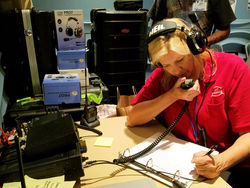
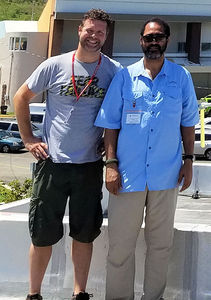
 Sponsored by
Sponsored by .jpg) "Many of us filed notices with the Utilities Technology Council on September 15, the day the notification procedure was announced," said Fritz Raab, W1FR, who coordinated the ARRL
"Many of us filed notices with the Utilities Technology Council on September 15, the day the notification procedure was announced," said Fritz Raab, W1FR, who coordinated the ARRL 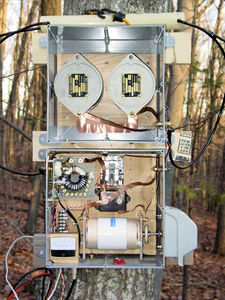
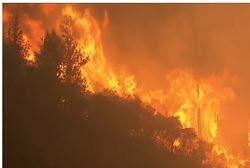 He reported this past weekend that fire had returned to eastern Santa Rosa, not too far from his house. He told ARRL that he's concerned about his elderly mother's home, in the area affected by the Oakmont Branch Fire -- part of the Nuns Fire. His mother is with relatives and out of danger.
He reported this past weekend that fire had returned to eastern Santa Rosa, not too far from his house. He told ARRL that he's concerned about his elderly mother's home, in the area affected by the Oakmont Branch Fire -- part of the Nuns Fire. His mother is with relatives and out of danger.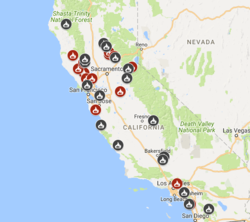
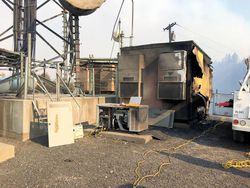

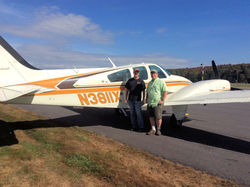
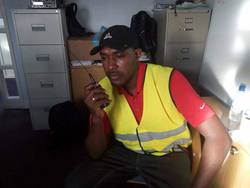
.jpg)
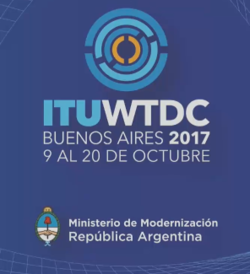 Lewis, of Trinidad and Tobago, reiterated her remarks in condensed form during a subsequent
Lewis, of Trinidad and Tobago, reiterated her remarks in condensed form during a subsequent .jpg) "This will be a very competitive field. The top three teams of WRTC 2014 in Boston will participate once again in the 2018 event!" said Ulf Ehrlich, DL5AXX, who managed the selection process.
"This will be a very competitive field. The top three teams of WRTC 2014 in Boston will participate once again in the 2018 event!" said Ulf Ehrlich, DL5AXX, who managed the selection process.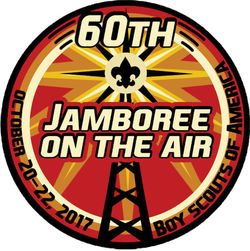 Reminder: This is JOTA Weekend: With nearly 600 stations in the US registered to take part in Scouting's 60th Jamboree on the Air (
Reminder: This is JOTA Weekend: With nearly 600 stations in the US registered to take part in Scouting's 60th Jamboree on the Air (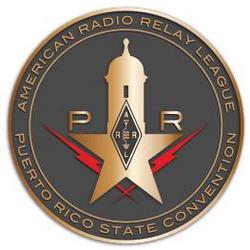 ARRL 2018 Puerto Rico State Convention Cancelled: The Organizing Committee for the 2018 ARRL Puerto Rico State Convention has announced the cancellation of the 2018 convention, set for January 26-28, 2018, in Hatillo. 2018 Convention Chairman Juan "Coki" Montijo, WP4OV, explained that the convention site, the Pancho Deida Coliseum, was damaged and unlikely to be ready in time for the convention. "We would like to take advantage of this opportunity to thank all of the Puerto Rico ham radio operators who have been involved in this recovery effort, and the volunteers from ARRL who have been working alongside in the aftermath of the storm," he added. "We look forward to our 2019 convention."
ARRL 2018 Puerto Rico State Convention Cancelled: The Organizing Committee for the 2018 ARRL Puerto Rico State Convention has announced the cancellation of the 2018 convention, set for January 26-28, 2018, in Hatillo. 2018 Convention Chairman Juan "Coki" Montijo, WP4OV, explained that the convention site, the Pancho Deida Coliseum, was damaged and unlikely to be ready in time for the convention. "We would like to take advantage of this opportunity to thank all of the Puerto Rico ham radio operators who have been involved in this recovery effort, and the volunteers from ARRL who have been working alongside in the aftermath of the storm," he added. "We look forward to our 2019 convention."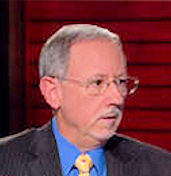 David Trachtenberg, N4WWL, Confirmed as Principal Deputy Undersecretary of Defense for Policy: The US Senate this week confirmed ARRL member David Trachtenberg, N4WWL, of Burke, Virginia, as the next Principal Deputy Under Secretary of Defense for Policy. Trachtenberg, 60, is the president and CEO of Shortwaver Consulting LLC, a national security consultancy. He is National Planning Coordinator and Northeast Division Director for USAF MARS, and is active in the Pentagon Amateur Radio Club (
David Trachtenberg, N4WWL, Confirmed as Principal Deputy Undersecretary of Defense for Policy: The US Senate this week confirmed ARRL member David Trachtenberg, N4WWL, of Burke, Virginia, as the next Principal Deputy Under Secretary of Defense for Policy. Trachtenberg, 60, is the president and CEO of Shortwaver Consulting LLC, a national security consultancy. He is National Planning Coordinator and Northeast Division Director for USAF MARS, and is active in the Pentagon Amateur Radio Club (.jpg) Over the same two periods, the average daily solar flux declined from 76.8 to 70.5, while the average daily planetary A index increased from 8.9 to 21.1, and average mid-latitude A index jumped from 8 to 16.7.
Over the same two periods, the average daily solar flux declined from 76.8 to 70.5, while the average daily planetary A index increased from 8.9 to 21.1, and average mid-latitude A index jumped from 8 to 16.7.







